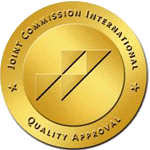DR. DAVID SAMADI ON ROBOTIC SURGERY, ITS CHALLENGES AND WORKING WITH THE KAZAKH TEAM
He is a celebrity doctor. This is what you find in the first paragraphs on his personal Wikipedia page. It is not that Doctor David Samadi is dealing with the stars, he is a star himself in the professional field, to be concise, one of the pioneers in urology who started doing operations with the help of a robotic system.
Now Dr. Samadi along with the team of surgeons of the Presidential Hospital is helping to build and develop the very first robotic surgery program in Kazakhstan for general surgery, gynecology and urology. The doctors have already done more than 70 operations on the robot and now advancing their skills under Dr. Samadi’s mentorship.
We’ve talked to doctor himself during the breaks in his busy schedule and find out his views on the past and the future of the robotic surgery, and it’s potential in Kazakhstan.
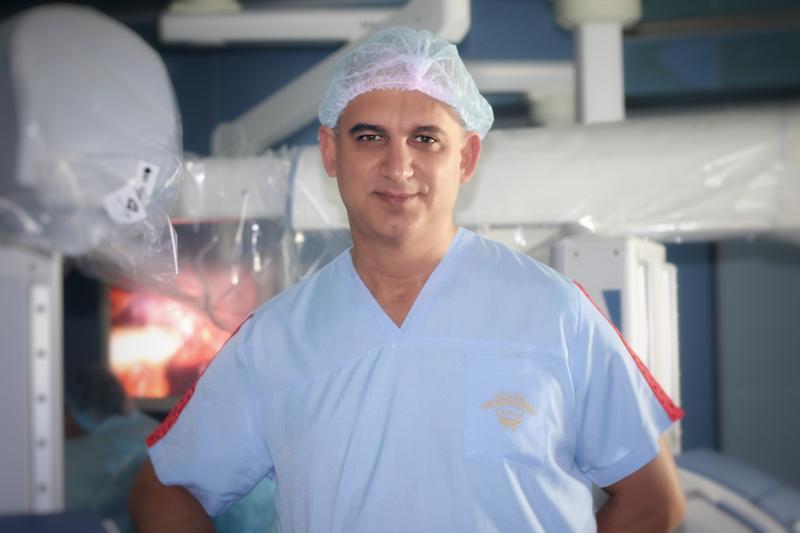
Dr. Samadi first of all how are you dealing with jetlag?
I think there is a great thing to break this jetlag habit. The first time I was very tired because I didn’t do it right, but I am learning how to deal with it.
How?
- I believe there is a system. There is no direct flight between New York and Astana, that’s why the first part of it this time I slept, the second part from Germany to Kazakhstan I stayed up and that’s very important. Somehow I am learning to trick this jetlag habit, but it’s really not a big problem. I think myself and the team are getting used to it.
What about the local culture? I suppose you should also get used to it…
I grew up in this region, I was born in Iran so I understand the culture, I understand the handshake, the kindness, the hugs, the kisses. This morning I had a patient who was so grateful and so happy. I just went to give a handshake and she started kissing my hand. This is utmost respect in countries like Kazakhstan and I remember growing up seeing this in Iran too.
“The understanding that the key to a successful robotic surgery is not just to buy a piece of equipment and pretend you have a robotic program is crucial”.
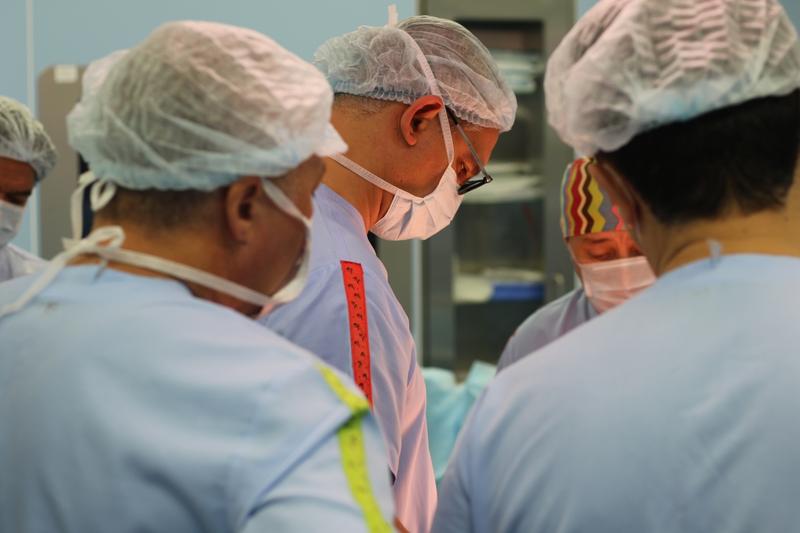
You came to Kazakhstan with a certain mission of developing the robotic surgery program and mentoring Kazakhstani surgeons to perform an operation with this technology. How do you feel about all of this?
The fact that we are bringing robotic surgery to Kazakhstan it’s a credit to the administration of the Hospital and the leader of the country. I see progress in what’s going on in Kazakhstan and I think that the President of this country is really moving this country to a whole new level. Especially in science and medicine, there is a lot of effort and investment that’s going into it to make sure that the public is getting the best help and the best healthcare. For me to be in the middle of this is a tremendous honor.
Could you elaborate on what robotic surgery is?
You have to first understand where we started. We started with the open surgery: when you make an incision you will use your own hands to do the operation whether it’s for prostate, bladder, kidney, gallbladder. That was a traditional way of doing this and still a lot of open surgeries being done. Problem with open surgery is that pain comes with incision, you can cause bleeding with using your hand and visualization – we can’t see so well because of the distance between my eyes as a surgeon and an organ is far. It’s almost maybe one foot.
Having that experience of open surgery than we go to the laparoscopic operations. Now you make a small opening, mini tiny halls in the abdomen. They are almost of a size of the tip of the pen. You introduce your instruments and put gas in the abdomen. Why are we doing this? Because now you have the camera, you are magnifying the field, there is no blood in it so this wonderful because you don’t need to touch (organs) anymore, you can zoom in and see the details of the surgery really well. That was major advancement - the gas that we put in the abdomen prevents any kind of blood coming in, the field is very clear and you can do a much better operation, much more detailed operation.
Over the years we took the experience of open surgery, everything we learned from opening patients to laparoscopic surgery, and then we went to robotic surgery.
Same concept as the laparoscopic surgery, same tiny holes in the abdomen, same gas in the abdomen, but instead of standing next to patient, you are about 10 feet away now. The reason why we are doing this is that now we get better magnification, we have a better range of motion, our mobility becomes much nicer and in theory we can do much more detailed operation than in laparoscopy.
The other thing is also with the robotic system you are sitting comfortably as opposed to being standing and for a surgeon, this is much easier: you don’t get back and knee pain. Now you don’t need to ask your assistant to move the camera since you can control it yourself. This is a foundation of what we have built so far. I think that the key to a successful robotic surgery is to have the knowledge of open surgery and laparoscopy and then going to robotic surgery. That evolution makes a lot of sense. The understanding that the key to a successful robotic surgery is not just to buy a piece of equipment and pretend you have a robotic program is crucial. I always say that behind the successful man there is always a woman, so we can say behind a successful robotic program are excellent surgeons. So that experience of the surgery plays a big role in the outcome of patients.
“Today the surgery that was taking 4-5 hours in open surgery (and believe me I am open surgery trained), but now those surgeries with new technology take only an hour and a half”.
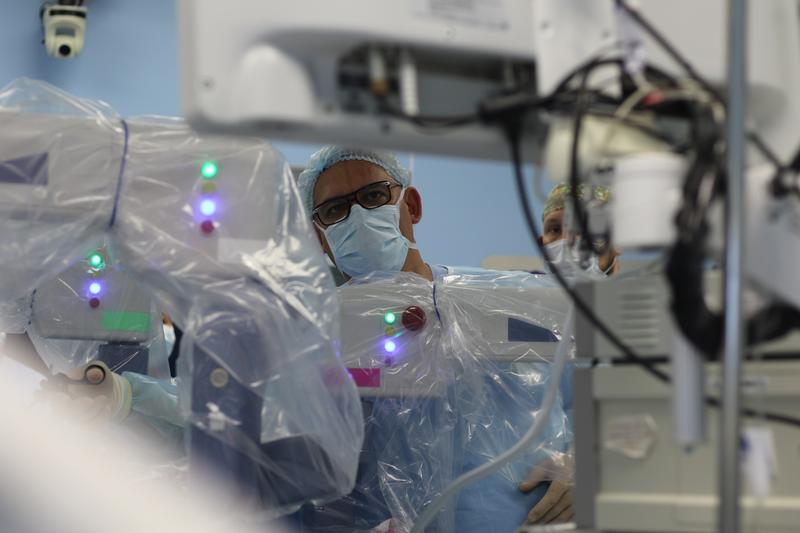
What kind of skills a surgeon should have apart from knowing how to work on a robotic system?
-You need to have basic surgical skills and volume. Having a large volume of cases is the key. Having a team in the operating room is excellent as well. It’s almost like being in a soccer field where every player knows exactly where he has to be: you have forward, you have people in a middle, you have a defense. So the same thing is happening in the operating room. You need to have a dedicated anesthesiologist who understands the dynamics of robotic surgery, you need to have a great assistant and a great team. Everybody has his own role, everybody is doing what he needs to do. Then if you have the experience, volume, team, expertise and now on top of it you have the technology, one can say you have the real program. Ultimately, the result is the great outcome for the patients: less the recovery, less blood loss, getting back to work early, better results of the surgery, all of it comes with this new technology.
Can we say that an assistant now plays an important role in an operating room than he/she did before?
-Your point is correct because in other surgeries you are right there with the patient, but now you depend on your assistant to be able to help you. Training a good assistant is vital – he/she is someone who understands operation like you. These people are always two steps ahead of you to make sure that as a surgeon you will move through the operation correctly.
So following this idea, should a surgeon work with one team and assistants continuously?
-I think that at the beginning while you build up a volume it is good to be able to train multiple teams for different subspecialties. But I truly believe the key to the success of the program is not to mix all the nurses and all the teams all the time. It does not work that way. So if you have a robotic urology program, it is better to train nurses that are specializing in urology. If you have a gynecology team or general surgery team it is good for them to work with the same surgeon all the time to be able to have better efficiency. Efficiency means less time in the operating room, being able to do the same operation in a better outcome that will come in a shorter period of time. So I think having a team who are really familiar with what you need, what instruments you use to make the case go much smoother and much better.
How much time do you spend in the operating room today with the robotic system comparing it to the open surgery times?
Today the surgery that was taking 4-5 hours in open surgery (and believe me I am open surgery trained), but now those surgeries with new technology take only an hour and a half. You have to understand that this is not the typical experience of robotic surgeries, I have done thousands of operations for prostate cancer. So this is a different experience when the patients are only in the operating room for an hour and a half, there is no blood loss, recovery is faster. It really advanced and revolutionized the way we do surgery.
“I used to play a lot of Beethoven”.
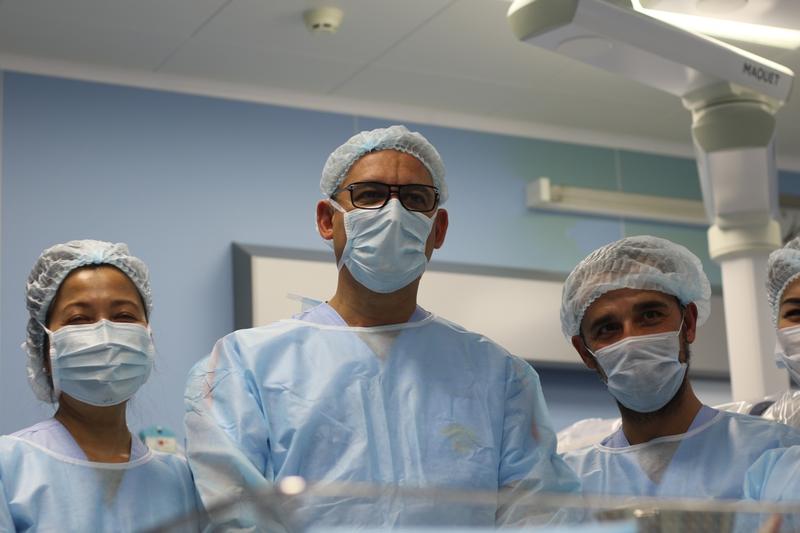
How does your usual working day look like today?
-I operate about three days a week. My day starts normally around 4 a.m. That’s my usual schedule. At 5 a.m. I am in the car, at 6 o’clock I am in the hospital in NY, at 7 o’clock I start my first case. I expertise in robotic surgery of prostate cancer - that’s what I am known for. So my day goes from starting at 7 a.m. and I operate till 7 or 8 p.m. It’s a long day and I do multiple surgeries with superb outcome. I love what I do, I enjoy being in the operating room. Also love to play nice classical music not myself, during the operations, I have the great collection of it.
What kind of classical music?
-Well, it’s very interesting. I used to play a lot of Beethoven. But because a lot of our patients are international, one day I may get a Greek patient, or I may get a patient from Argentina, Israel, now I play music of their home country for them and they feel like home. They hear it when they walk into my operating room. It’s not distracting at all, I think it’s important to have a room that is very much uplifting. And it works. It makes the surgery go much smoother for us.
Why do we use the robotic system in urology and gynecology only?
-Well, we are using robotic surgery not only in urology but in general surgery as well. The reason why urology became so popular is accessibility. If you look at the location of the prostate in the pelvic area, you will see that the access is extremely difficult. These long instruments of the robotic system become an extension of our arms, of surgeon’s hands, and we are able to go into areas that were very difficult to accomplish before. So it started mainly with urology, but then it got advanced into gynecology and general surgery. And the future is probably in cardiology and neurology. However, the brain is a different case because there is no place to put any gas since the skull that surrounds the brain is hard, abdomen, on the other hand, is soft and expandable. You can put gas in the abdomen. Right now with resection of the colon for general surgery, with the removal of the uterus, removal of myoma for gynecology, or various cases in urology for kidney, bladder or prostate – these are the good options.
“If you would give me an option of doing an open surgery versus robotic surgery today I would laugh at the first one, I would never do an open surgery again. I just don’t think it is necessary”.
However, robotic surgery is still to be introduced in many countries of the world. Being comparatively new technology in the field it is quite challenging for professionals to use. What're your thoughts on it?
-I am very happy that I was not scared, that I was not fearful of this technology 20 years ago. My message to surgeons in Kazakhstan is yes, every time there is something new and being nature of habits we always like to do what we are good at. You can criticize new things but not to the point of closing the door to yourself. It may or may not work for you, this technology is not for every surgeon and not everybody should be doing a robotic surgery, but be open-minded and see how we can advance this. I was just young enough and eager enough to really do this. Yes, there is a learning curve and it is absolutely challenging. But you can conquer it, step by step get better. If you would give me an option of doing an open surgery versus robotic surgery today I would laugh at the first one, I would never do an open surgery again. I just don’t think it is necessary.
You’ve mentioned that the patient’s recovery is going faster now...
In my field for open surgery for prostate cancer, we used to keep patients in the hospital from 3 to 5 days. Now they go home the next day. The pain was really worse, but today they don’t get any morphine, anesthesia is much shorter. The less time they spent in the operating room the faster they get to go home. The field has much improved and this is a big step.
How were you introduced to the robotic system for the first time?
I was one of the pioneers in the field. I did my fellowship in urologic oncology at the Memorial Solan Kettering Cancer Center in New York. I saw that a lot of these urological procedures were like a blood bath. This was a great center with a lot of experience, yet still, people would have a longer recovery. At that time laparoscopic surgery for prostate cancer and robotic surgery were just about to introduce. People were talking about it. So I spent a year in France where I learned laparoscopic surgery for prostate cancer, kidney, and bladder. In 2000-2001 we did the first robotic surgery in the world and it was really a crazy scene, totally like science fiction. The concept that you sit here as you move the hands of the robot, its instruments, inside the patient’s abdomen when you actually are few meters away was completely crazy, yet astonishing.
Do you remember your emotions?
My face was frozen. The first case we did as we were moving our instruments, it was surprise and shock. It was very interesting to see how for the first time you could look in the camera on the robot and see the entire field of surgery. It was a really eye-opening experience. The whole room was quite frozen and in shock of how this can be done. Then slowly you start doing a lot of it. When I started doing this in New York this was kind of a surprise for a lot of surgeons. They thought this would never work, that the robotic surgery was here for only a few months. But fast-forward 20 years later this is the way of all of our surgeries are being done and I think in the future the number of open surgeries will be very limited. Open surgery will never go away, but its number will continue to decrease and everything is going to be minimal invasive/robotic. And I think the future is here.
“We are in a position when we can invite a surgeon who is interested in bringing their patients or want to work with us in the Presidential hospital”.
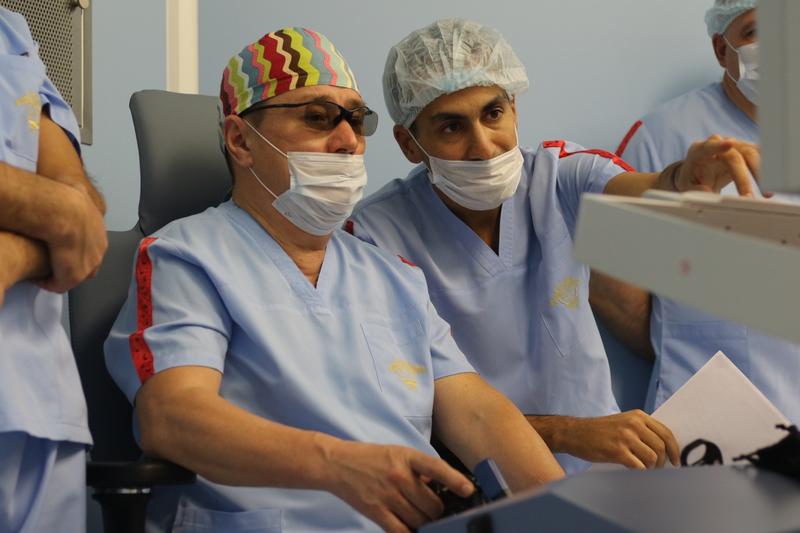
How can you evaluate the professional level of our surgeons? Are they ready for this kind of operations?
They are looking at this in a critical way, but they are very open-minded. We have planned strategically step by step on how to make the program successful. I think its success time was due to all preplanning work done by the administration, by the surgeons, by us and my team. The other thing that I found is that these guys work extremely well together, they build up and complement each other, which is great. I also thought that the staff around the surgeons, people behind the scene, who usually don’t get all the credits, they did an amazing job. My position is always to recognize that. So also I proud of my team which travels with me. Even though we, Kazakhs and Americans, have different cultures, we merged together really well and after a day or two days, it seemed completely natural as if we knew each other for a very long time. I think that they are on their way to big success.
Will you continue to mentor the surgeons on a regular basis?
Absolutely. We will continue to come here on a regular basis. But it is not going to be like I come here, do my work and then disappear, we are building the ways of communication, we have access to visualize some surgeries live and I think that the next phase is to invite surgeons from the different regions of the country who will be interested in this. We are in a position when we can invite a surgeon who is interested in bringing their patients or want to work with us in the Presidential hospital. This is good for the benefit of the country, for the benefit of the patient and we can all work together and do well.
I think also this is also critical for the next generation of the surgeons to allow the medical students out there visit the training. You are going through medicine at a very exciting time in Kazakhstan when you can practice in the robotic training lab in the Presidential Hospital. Surgeons can come and improve their surgical skills. I never had that when I grew up, so this is a tremendous privilege for them and I am happy about it.
“The robot is a mediator between us, surgeons, and patients”.
Do you believe in the concept that one day robots will take over the whole industry and replace humans?
This is something that is not avoidable, we are surrounded by robots. When you go to the airport, to the factories – everywhere you are surrounded by this technology. The robots we are talking about today in an operating room are not the types of robots where you would press a button and it automatically would do the operation, I am not sure that one day we will have that. The robot that we have is completely under control of the surgeon. The surgeon’s hands, the surgeon’s movements are translated to the tip of the instruments on the patient’s abdomen. So it’s a surgeon doing an operation, but it’s better facilitated by the robot. The robot is a mediator between us, surgeons, and patients.
Let’s say you are a surgeon in your 50th or 60th and you have a tremor at the tip of your hand. When you do an open surgery this could be a little problem. Now the robot can take this surgeons hand movement and filter all of this so there will be no tremor, no shake. This is especially tremendous achievement when you are dealing with nerves, with someone’s urea control or sexual function. So that’s one of the reasons why we are taking advantage. Still, it’s all about people behind the technology. I always say that the skilled surgeon plus technology or robotics means better efficiency, better outcome. Inexperienced surgeon plus robotic system is still a bad outcome. So it’s not the robot that does a surgery, it’s a surgeon behind the robot.

